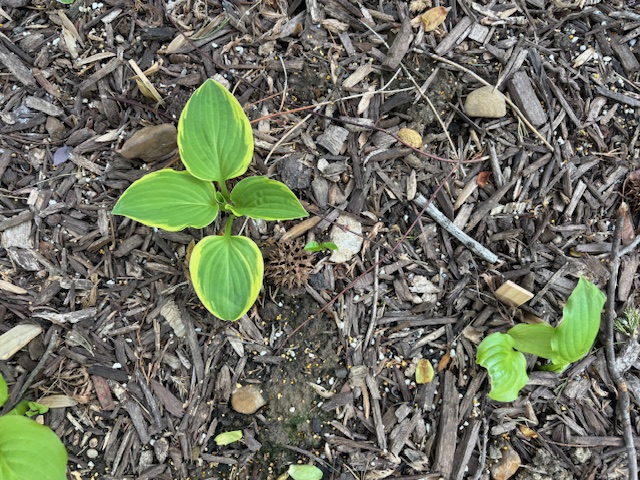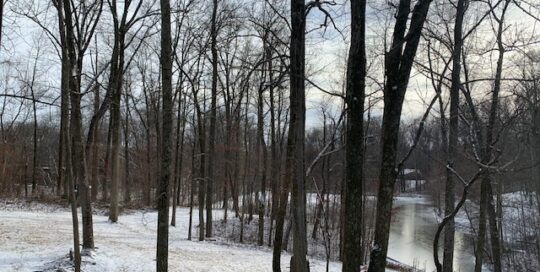Japanese Stiltgrass – Good News, Bad News
Views: 2452

Last year, we noticed a strange plant in a few spots in the yard; some type of grass with a rather attractive, flowing texture, it stayed about 12 to 24 inches tall, grew very well in the shade and didn’t seem to be bothered by anything. It particularly liked moist areas. The fact that it bore a family resemblance to Wonderful Husband’s black bamboo should have been a really big clue, but I thought, “Gee, it’s kinda pretty” and left it alone.
This year, it has taken over the yard, especially the more neglected areas and even in our woods. The alarm bells finally went off in our heads. We took some photos and emailed them to our County Extension agent, asking for an identification.
The diagnosis was not good – we have Japanese stiltgrass (Microstegium vimenium). The USDA has called this weed “one of the most damaging plant species in the United States” (https://invasivespeciesinfo.gov). That’s saying quite a lot, when you consider Japanese stiltgrass is competing with kudzu, Autumn olive, Russian olive and garlic mustard, just to name a few.
Now that I know what I’m looking at, I’m seeing it all along the roadside drainage ditches, meaning it’s made itself right at home here – darn the bad luck!
Effects of Japanese Stiltgrass
It’s a problem because it will simply outgrow our native species (or your precious garden plants), take over any partly shaded area, and isn’t a food source or habitat for any animal. Even the deer won’t eat it. It spreads by seeds, thousands of small sticky seeds, which transport on boots, clothing, animal fur and even by water in drainage ditches and streams.
Still, there’s good news and bad news: the good news is that it can be controlled and eliminated in your yard; the bad news? It will come probably come back every year – your life will never be the same.
If you find some small patches of it, just pull it up. Then bag it up and dispose of it with your trash. Keep your eyes open for it every year. My favorite hand tool for weeding is a Japanese style weeding sickle. I’ve had it for years. It slices right under the soil and cuts the roots, making easy work out of the stiltgrass.
If you have such a large area that hand-pulling isn’t really practical and don’t want to use chemicals, wait until after it blooms (early to mid-August here in Zone 6b) and mow it; use a mower bag and dispose of it with your trash. DO NOT mow after it has set seed, all you’ll do is spread the seeds even more.
A pre-emergent crabgrass prevention treatment is effective. Crabgrass killer kills young plants. Broad-spectrum herbicides, such as glyphosate, also kill it, but that kills well, basically almost everything…sort of a scorched-earth strategy.
So keep your eyes open for it and…
Stay Green, Good Friends!
Meet Dona Bergman
Dona Bergman is a founding member, Southwest Indiana Chapter of the Indiana Native Plant & Wildlife Society, and an Advanced Master Gardener.







